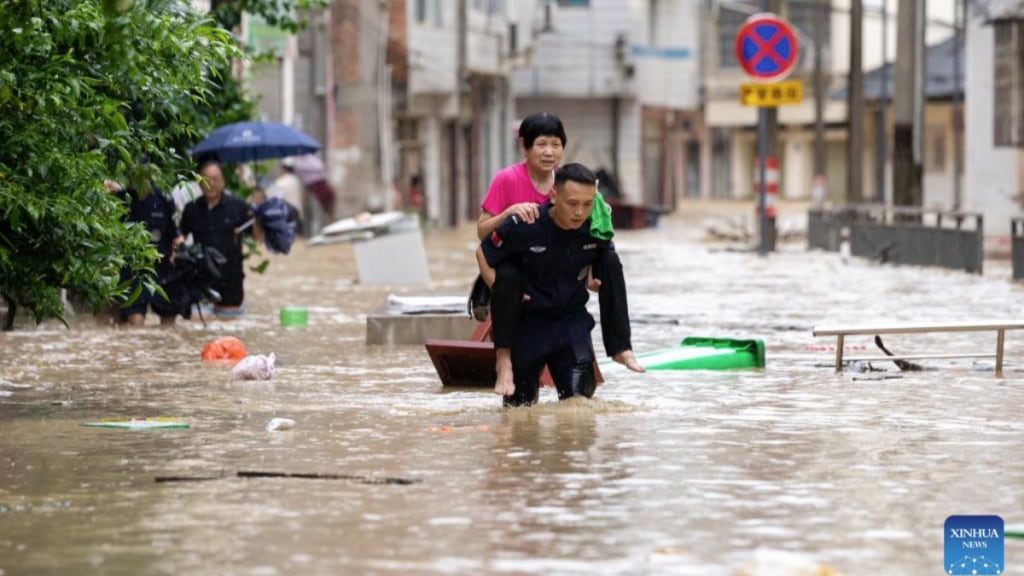A wave of relentless rainfall across China’s southern and central provinces has triggered severe flooding, forcing tens of thousands of residents to evacuate, whilst also delivering extensive damage to local infrastructure and economies. The flood has not only submerged parts of towns but has also exposed the nation’s increased vulnerability to such natural disasters.
As reported by Reuters, more than 40,000 residents in Rongjiang had been urgently evacuated as of 6 p.m. IST on Saturday, as the Rongjiang district in Guizhou province was submerged for the second time this week.
Guizhou, Guangxi Among Worst-Hit Regions
Guizhou province, located in Southwestern China, which was already grappling with overflowing rivers and landslides, has seen city streets turned into canals, sweeping away vehicles and overwhelming drainage systems. Rongjiang, which was inhabited by over 300,000 people, experienced half-submerged neighbourhoods and engulfed commercial complexes. Emergency authorities reported over 80,000 evacuations and multiple confirmed casualties as rainfall totals surpassed historical norms as of Sunday.
Neighbouring Guangxi province bore the brunt of upstream water surges, particularly from Guizhou. Videos circulated online show collapsed bridges, homes under water, and citizens being rescued from rooftops. In one dramatic rescue, a truck driver was pulled to safety after a bridge caved in beneath him.
Wider Impact Across Central China
Provinces like Chongqing and Hunan also reported alarming water levels, with some rising over two metres above safety thresholds. In Chongqing alone, nearly 300 people were evacuated following 300+ mm of rainfall in under 24 hours. Officials have since raised flood alerts to the highest tier in several districts.
In a particularly distressing case, an 8-year-old girl in Guizhou was rescued after being trapped in a sewer drain for nearly seven hours. Her survival was hailed as a symbol of resilience amid mounting challenges.
Climate Pressure and Policy Implications
This spate of extreme weather has revived concerns over climate volatility and the adequacy of urban planning in flood-prone zones. Experts argue that urban sprawl and ageing flood control systems in smaller cities are exacerbating the impact of torrential rain. The ongoing crisis comes just weeks after Typhoon Wutip lashed southern China, and meteorologists warn of another tropical system developing offshore.
In response, the Ministry of Emergency Management has mobilised additional relief teams and pledged a structural review of regional preparedness measures.

